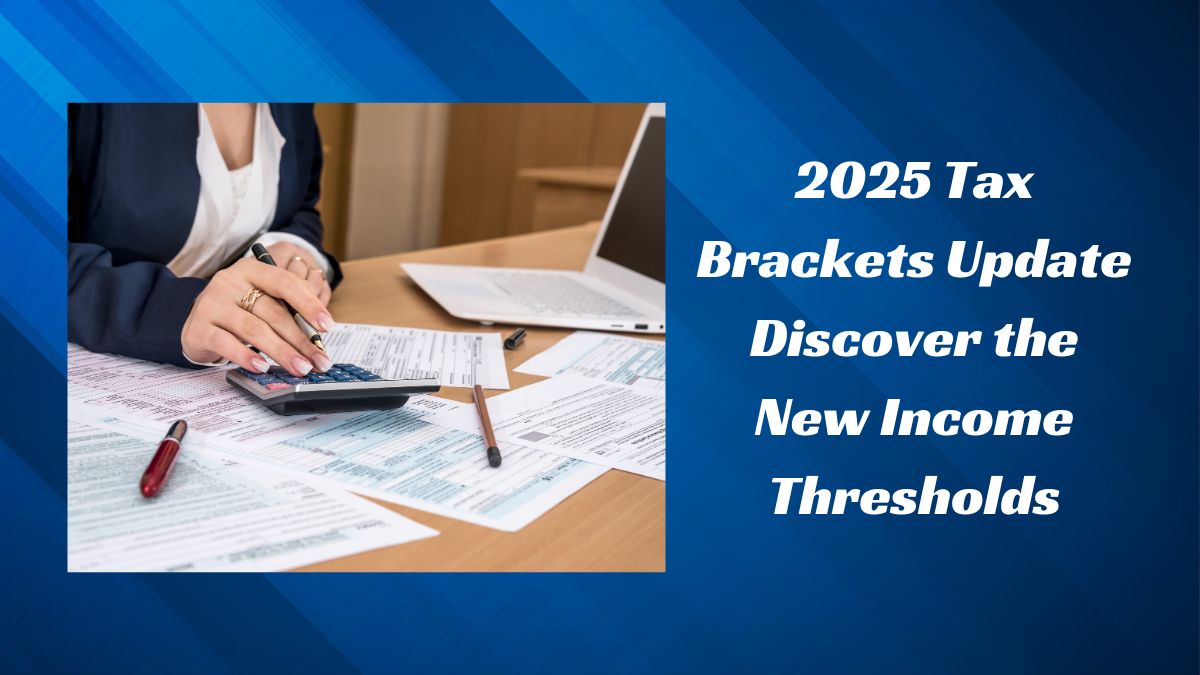As we approach 2025, the tax brackets in the United States are set for their annual adjustment, driven by inflation and economic factors. These updates from the Internal Revenue Service (IRS) will influence how much individuals and families will pay in taxes, making it crucial for taxpayers to understand the upcoming changes.
Whether you’re self-employed or earning a salary, these adjustments could impact your tax liabilities for the 2025 tax year.
What Are Tax Brackets?

Tax brackets shows the percentage of tax you pay based on your income. The U.S. tax system is progressive, means higher income levels are taxed at high rates.
Each bracket applies a specific tax rate to a portion of your earnings, and the more you earn, the more you’ll pay in taxes.
2025 Tax Brackets and Income Thresholds
The 2025 tax brackets are expected to see moderate increases in income thresholds, reflecting inflationary trends. Here are the projected income thresholds for 2025:
| Tax Rate | Single Filers | Married Couples Filing Jointly |
|---|---|---|
| 10% | Up to $11,000 | Up to $22,000 |
| 12% | $11,001 – $44,725 | $22,001 – $89,450 |
| 22% | $44,726 – $95,375 | $89,451 – $190,750 |
| 24% | $95,376 – $182,100 | $190,751 – $364,200 |
| 32% | $182,101 – $231,250 | $364,201 – $462,500 |
| 35% | $231,251 – $578,125 | $462,501 – $693,750 |
| 37% | Over $578,125 | Over $693,751 |
These figures are projections and may undergo slight changes once finalized by the IRS. However, they offer a clear picture of how income levels will align with the new tax rates for the 2025 tax year.
What Do These Changes Mean for Taxpayers?
The updated 2025 tax brackets are designed to reflect inflation, preventing taxpayers from paying more taxes simply due to rising prices. You won’t have a large rise in your tax liability if your income stays in the same bracket. Moving to a higher income category, however, may result in a larger tax percentage.
How to Prepare for the 2025 Tax Changes

Understanding the new tax brackets will help you plan your finances more effectively. Here are a few steps you can take:
- Estimate your taxable income: Know where your income stands relative to the new brackets.
- Adjust your tax strategy: Consider ways to reduce taxable income through deductions and tax credits.
- Consult a tax advisor: A professional can help you plan for these changes and develop strategies to minimize your tax bill.
Taking action early on with these updates will help you avoid unexpected events and make sure you are taking advantage of your financial situation.
The 2025 tax bracket changes are to keep up with rising prices and make sure taxes are fair in the U.S. By knowing about these changes and changing your tax plan, you can get ready for next year’s taxes and save more money. Watch for the official IRS news.
FAQs
The IRS adjusts tax brackets annually to account for inflation, preventing taxpayers from being penalized by rising costs.
No, these changes will only apply to the 2025 tax year. Your 2024 tax return will use the current brackets.
You can estimate your 2025 taxes by using the projected tax brackets and your expected income for the year.
Yes, the U.S. tax system is progressive, meaning higher income levels are taxed at higher rates.
You can reduce your taxable income by using deductions and taking advantage of tax credits, which can lower your overall tax bill.




